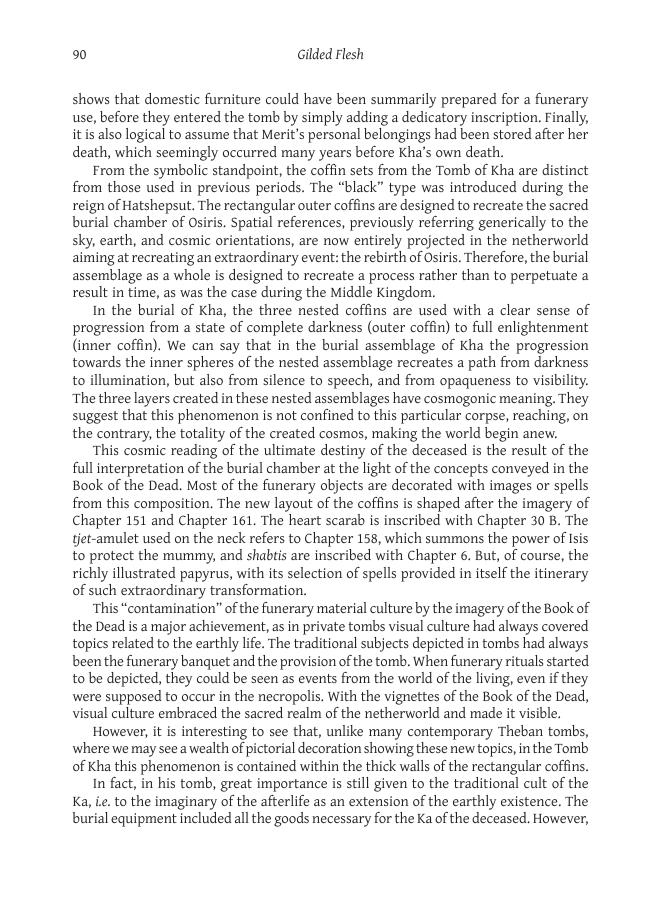Gilded Flesh : Coffins and Afterlife in Ancient Egypt
272 p.
Egyptian coffins stand out in museum collections for their lively and radiant appearance. As a container of the mummy, coffins played a key role by protecting the body and, at the same time, integrating the deceased in the afterlife. The paramount importance of these objects and their purpose is detected in the ways they changed through time. For more than three thousand years, coffins and tombs had been designed to assure in the most efficient way possible a successful outcome for the difficult transition to the afterlife. andnbsp;This book examines eight non-royal tombs found relatively intact, from the plains of Saqqara to the sacred hills of Thebes. These almost undisturbed burial sites managed to escape ancient looters and so their discoveries, from Marietteandrsquo;s exploration of the Mastaba of Ti in Saqqara to Schiaparelliandrsquo;s discovery of the Tomb of Kha and Merit in Deir el-Medina, were sensational events in Egyptian archaeology.andnbsp;Each one of these sites unveils before our eyes a time c
apsule, where coffins and tombs were designed together as part of a social, political and religious order. From Predynastic times to the decline of the New Kingdom, this book explores each site revealing the interconnection between mummification practices, coffin decoration, burial equipment, tomb decoration and ritual landscapes. Through this analysis, the author aims to point out how the design of coffins changed through time in order to empower the deceased with different visions of immortality. By doing so, the study of coffins reveals a silent revolution which managed to open to ordinary men and women horizons of divinity previously reserved for the royal sphere. Coffins thus show us how identity was forged to create an immortal and divine self. [Publisher's text].
Special access authorizations may apply; please contact us for further information.
-
Information



